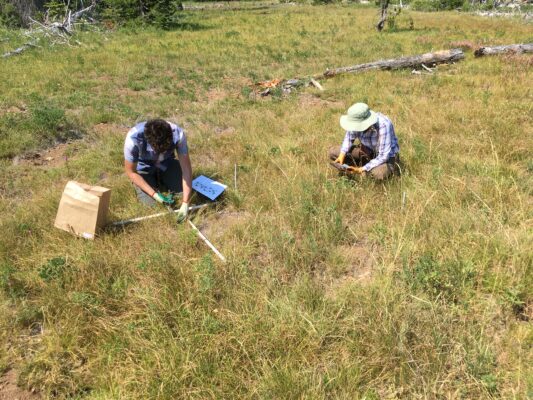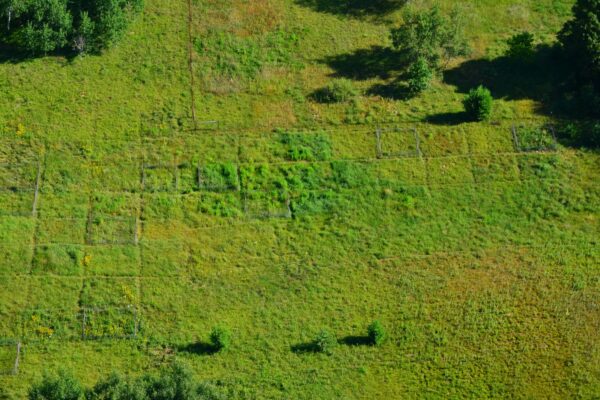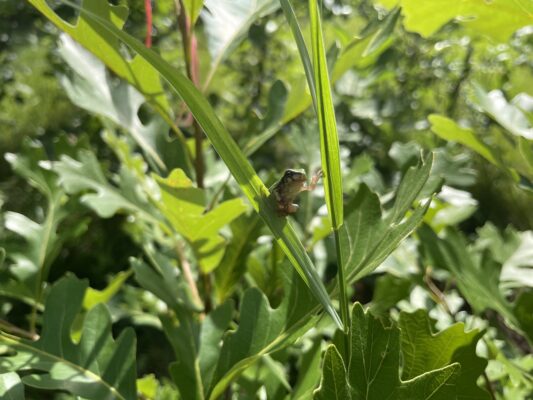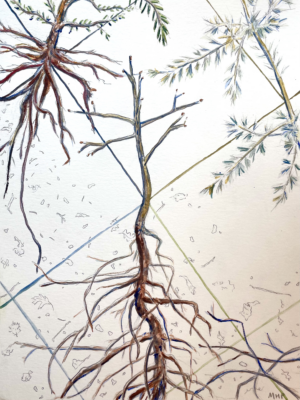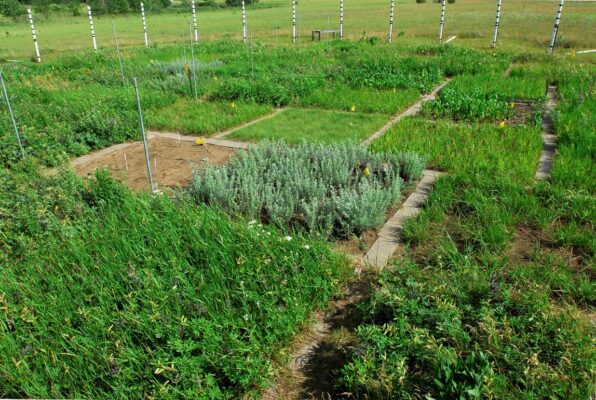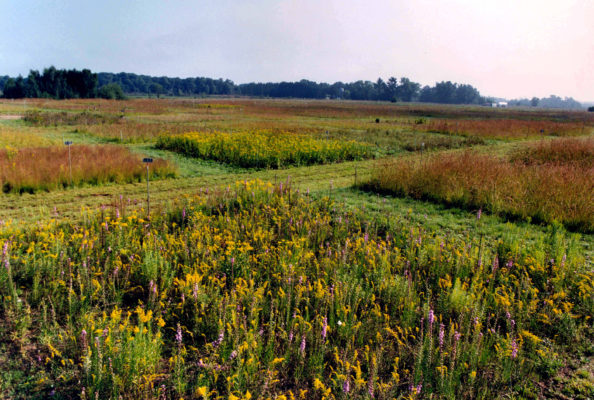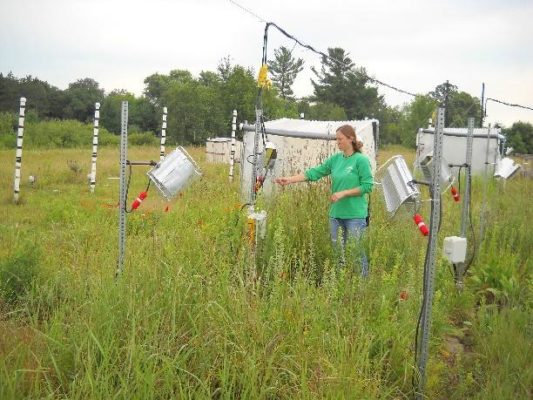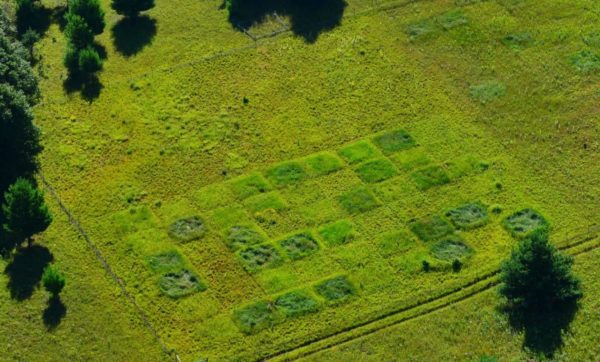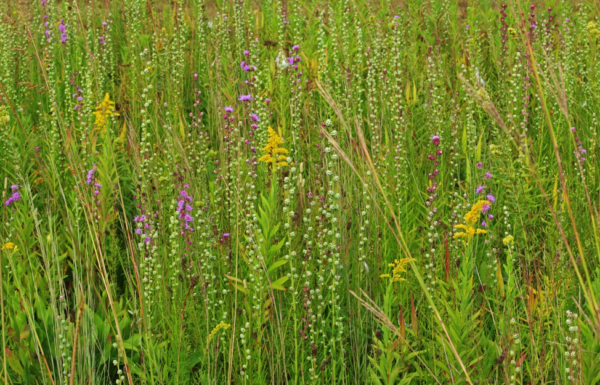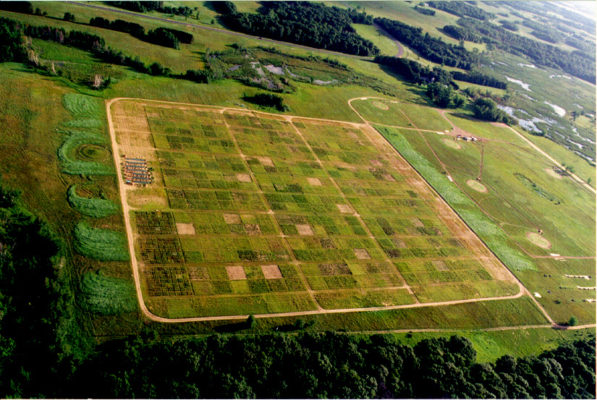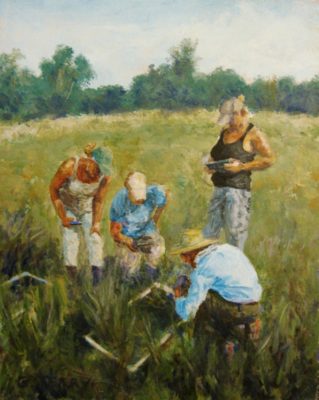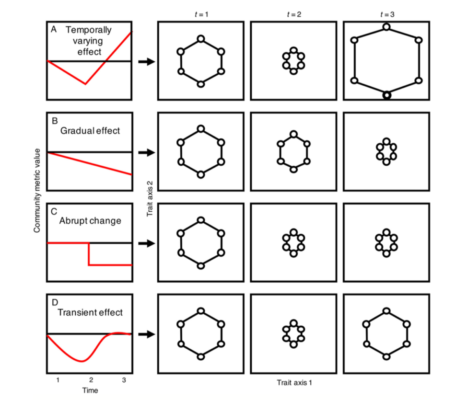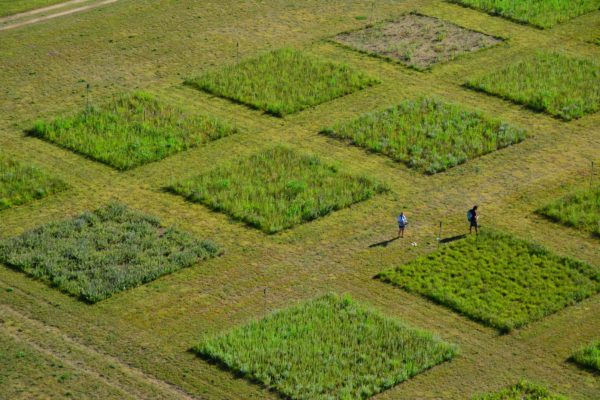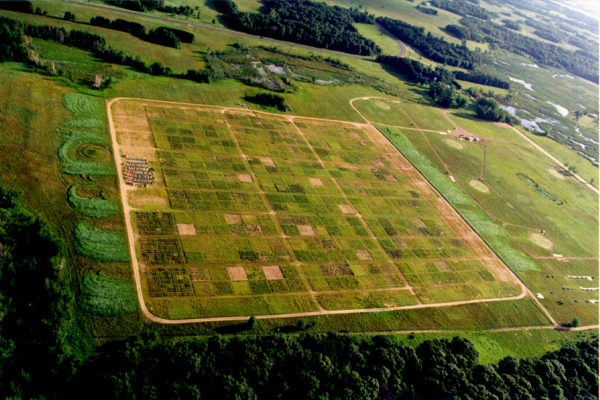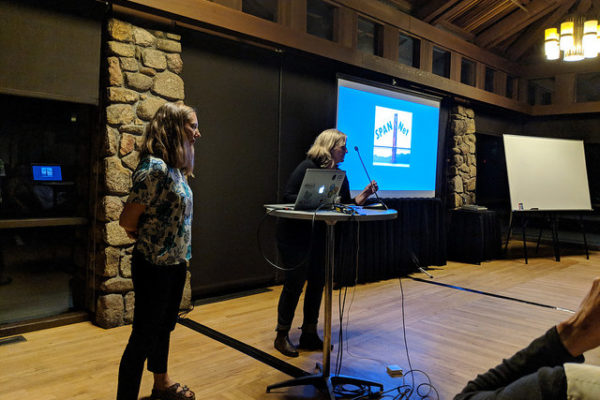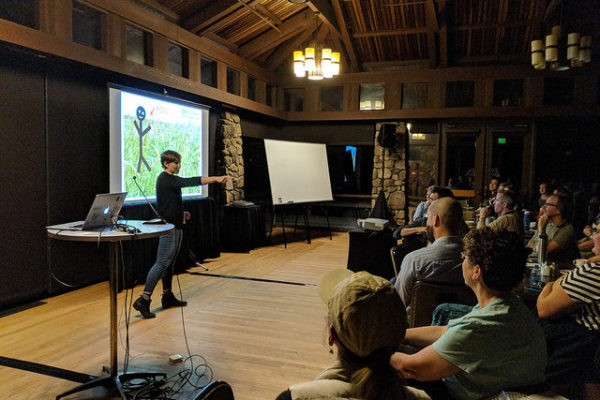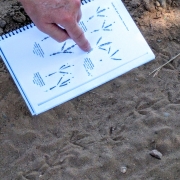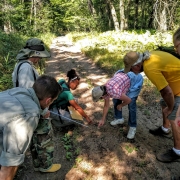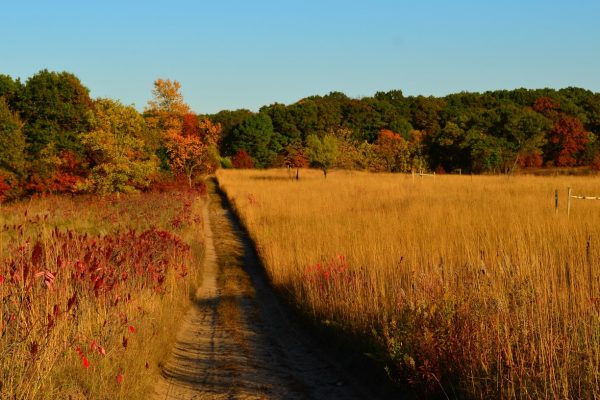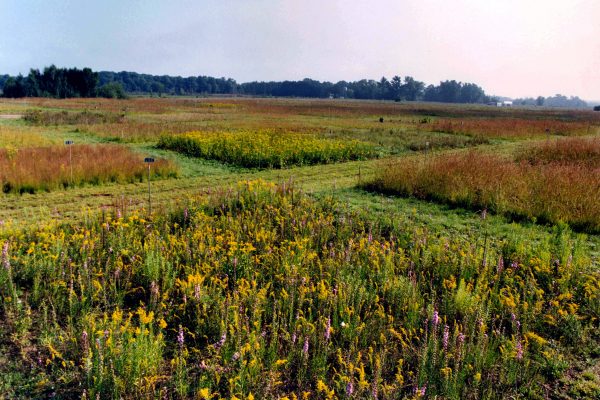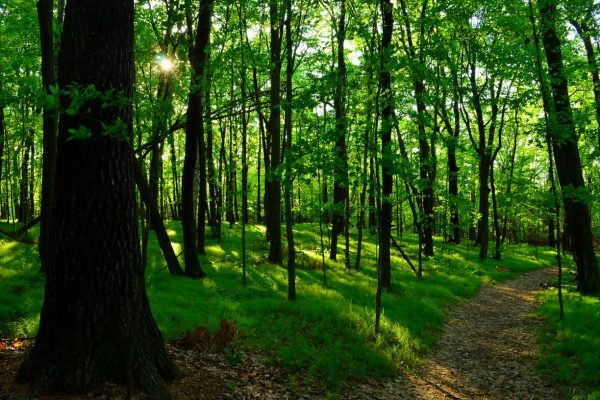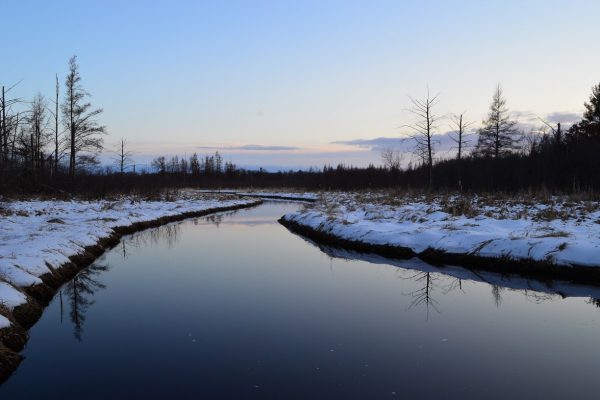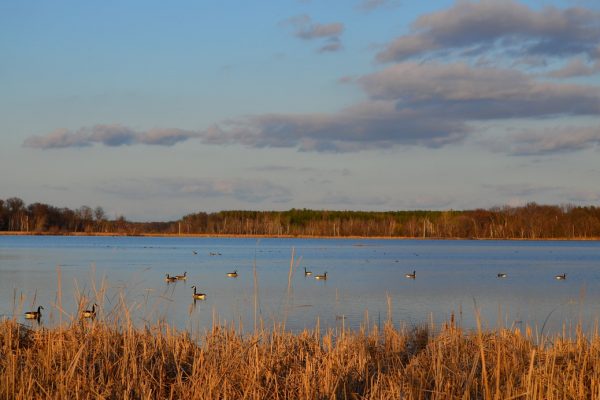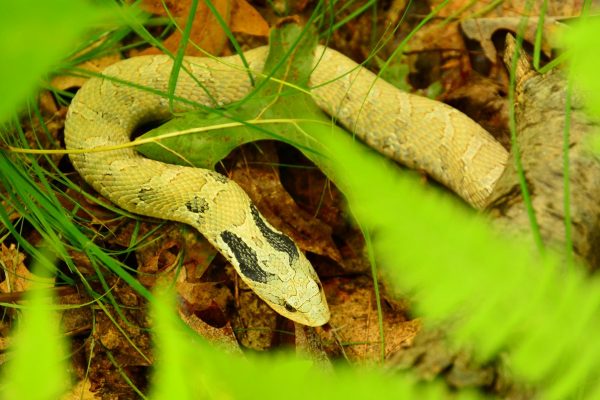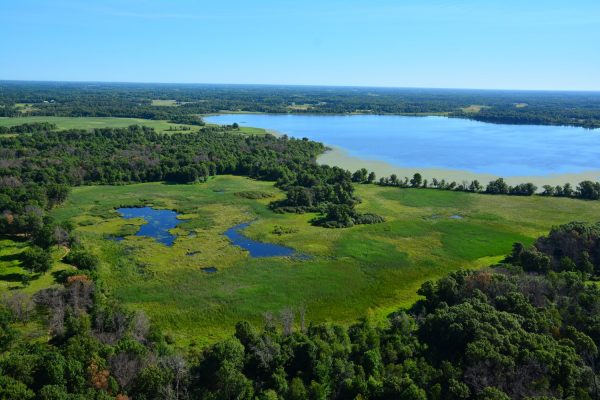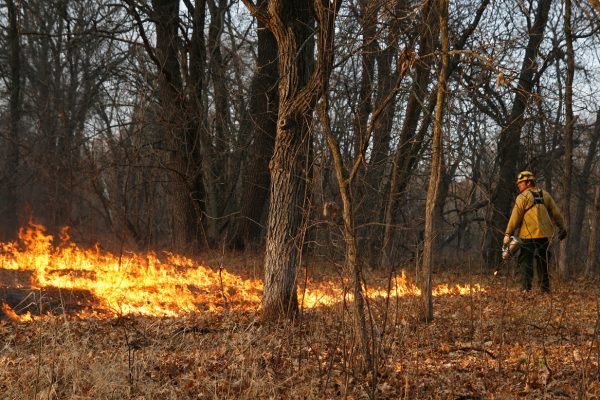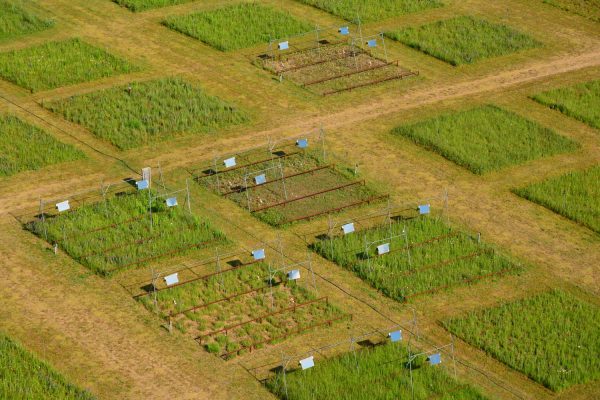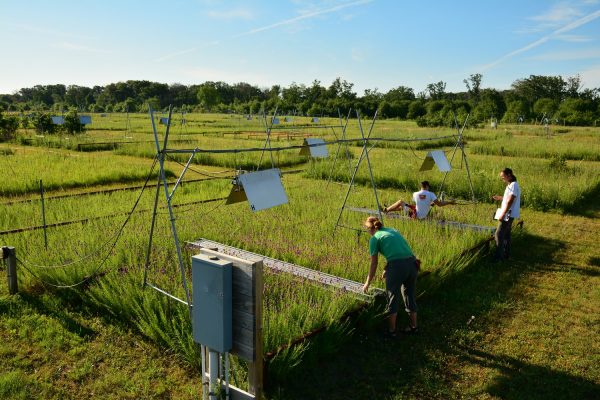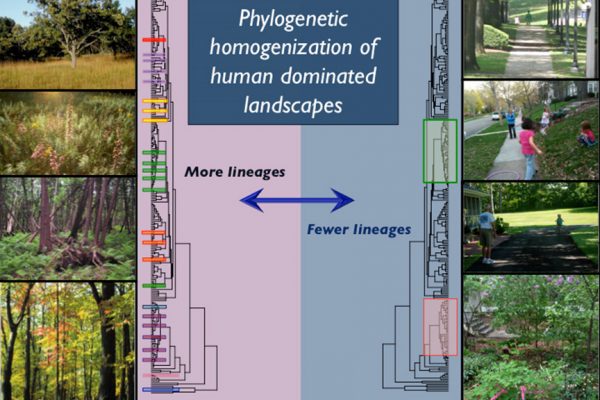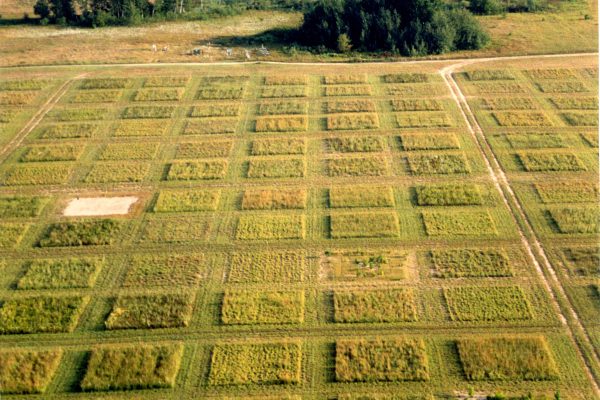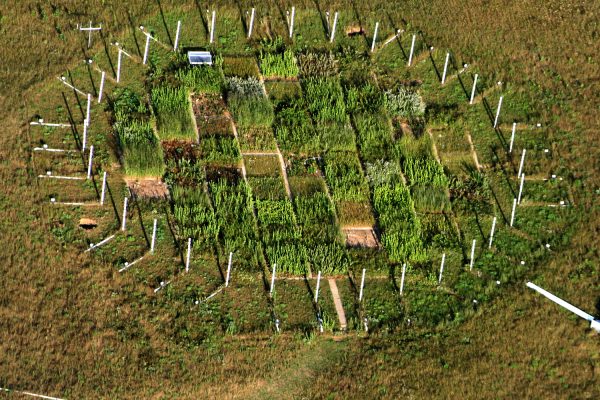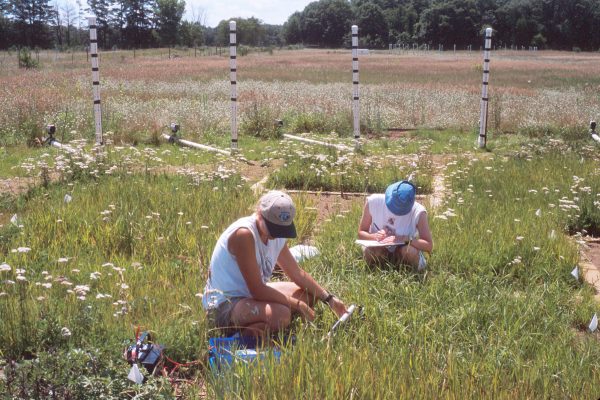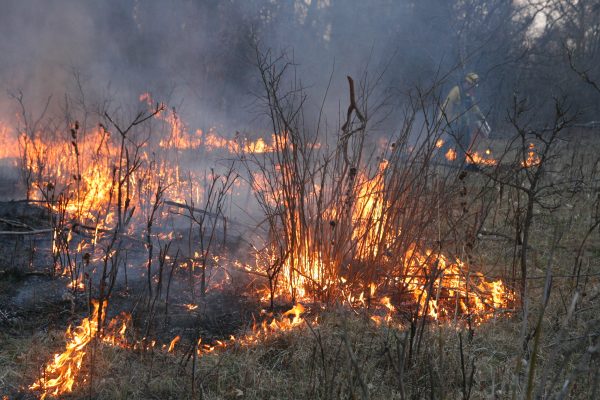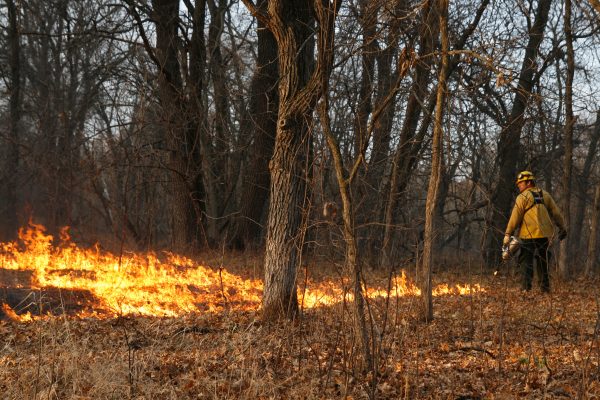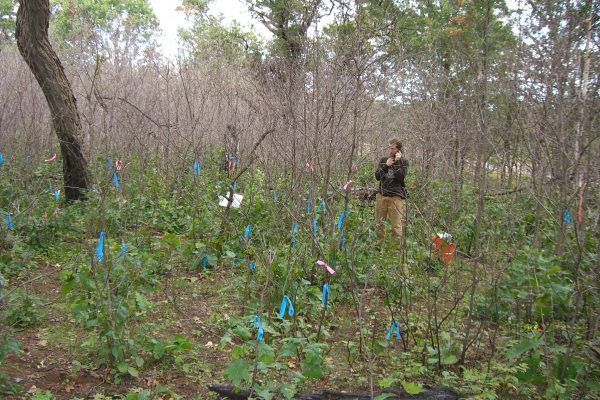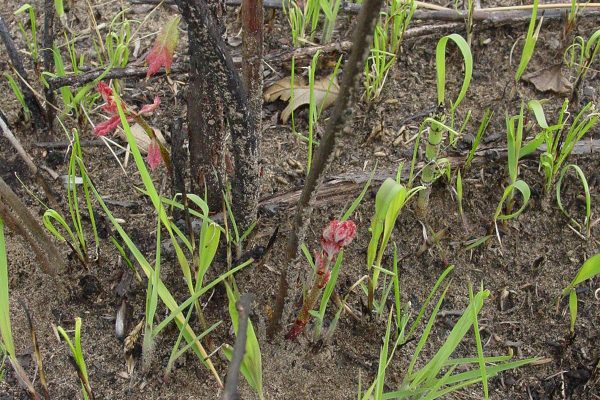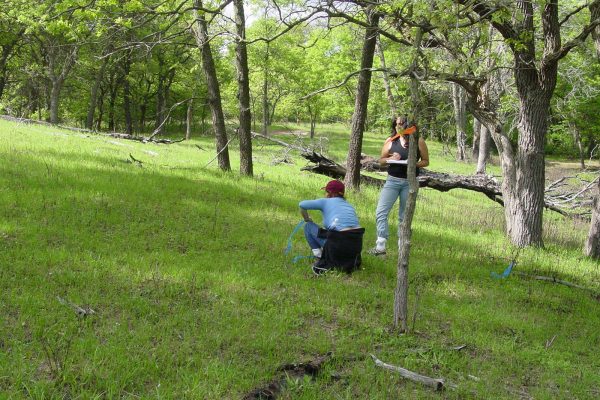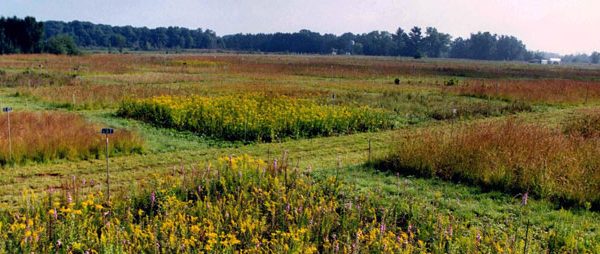
Credit: Credit: CDR-LTER; CC BY-SA 4.0
Long-term biodiversity-productivity experiments, such as these at the Cedar Creek LTER are among wide-ranging data that researchers will synthesize. Credit: CDR-LTER; CC BY-SA 4.0
Cedar Creek LTER Image Gallery
E Zambello/LTER-NCO CC BY 4.0" data-envira-item-id="81141" data-envira-retina="https://lternet.edu/wp-content/uploads/2019/02/CDR9.png" data-thumb="https://lternet.edu/wp-content/uploads/2019/02/CDR9-75x50_c.png" data-title="CDR9" data-envirabox='site_images_1902' itemprop="contentUrl"> E Zambello/LTER-NCO CC BY 4.0" data-envira-gallery-id="site_images_1902" data-envira-index="22" data-envira-item-id="81141" data-envira-src="https://lternet.edu/wp-content/uploads/2019/02/CDR9-600x400.png" data-envira-srcset="https://lternet.edu/wp-content/uploads/2019/02/CDR9-600x400.png 400w, https://lternet.edu/wp-content/uploads/2019/02/CDR9-600x400.png 2x" data-title="CDR9" itemprop="thumbnailUrl" data-no-lazy="1" data-envirabox="site_images_1902" data-automatic-caption="CDR9 - Sprinklers watering a plot in the Big Bio experimental area. E Zambello/LTER-NCO CC BY 4.0" data-envira-height="200" data-envira-width="300" />
E Zambello/LTER-NCO CC BY 4.0" data-envira-gallery-id="site_images_1902" data-envira-index="22" data-envira-item-id="81141" data-envira-src="https://lternet.edu/wp-content/uploads/2019/02/CDR9-600x400.png" data-envira-srcset="https://lternet.edu/wp-content/uploads/2019/02/CDR9-600x400.png 400w, https://lternet.edu/wp-content/uploads/2019/02/CDR9-600x400.png 2x" data-title="CDR9" itemprop="thumbnailUrl" data-no-lazy="1" data-envirabox="site_images_1902" data-automatic-caption="CDR9 - Sprinklers watering a plot in the Big Bio experimental area. E Zambello/LTER-NCO CC BY 4.0" data-envira-height="200" data-envira-width="300" />
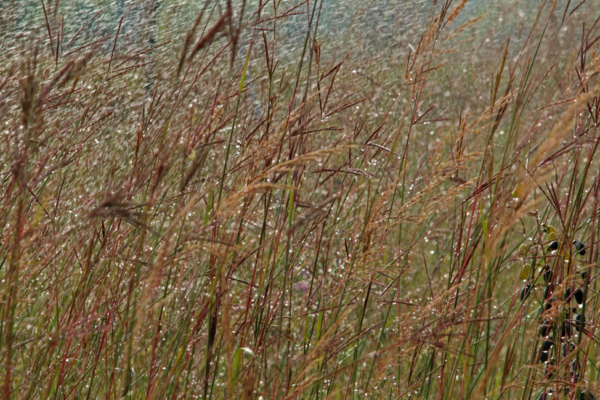 E Zambello/LTER-NCO CC BY 4.0" data-envira-gallery-id="site_images_1902" data-envira-index="22" data-envira-item-id="81141" data-envira-src="https://lternet.edu/wp-content/uploads/2019/02/CDR9-600x400.png" data-envira-srcset="https://lternet.edu/wp-content/uploads/2019/02/CDR9-600x400.png 400w, https://lternet.edu/wp-content/uploads/2019/02/CDR9-600x400.png 2x" data-title="CDR9" itemprop="thumbnailUrl" data-no-lazy="1" data-envirabox="site_images_1902" data-automatic-caption="CDR9 - Sprinklers watering a plot in the Big Bio experimental area. E Zambello/LTER-NCO CC BY 4.0" data-envira-height="200" data-envira-width="300" />
E Zambello/LTER-NCO CC BY 4.0" data-envira-gallery-id="site_images_1902" data-envira-index="22" data-envira-item-id="81141" data-envira-src="https://lternet.edu/wp-content/uploads/2019/02/CDR9-600x400.png" data-envira-srcset="https://lternet.edu/wp-content/uploads/2019/02/CDR9-600x400.png 400w, https://lternet.edu/wp-content/uploads/2019/02/CDR9-600x400.png 2x" data-title="CDR9" itemprop="thumbnailUrl" data-no-lazy="1" data-envirabox="site_images_1902" data-automatic-caption="CDR9 - Sprinklers watering a plot in the Big Bio experimental area. E Zambello/LTER-NCO CC BY 4.0" data-envira-height="200" data-envira-width="300" />E Zambello/LTER-NCO CC BY 4.0" data-envira-item-id="81140" data-envira-retina="https://lternet.edu/wp-content/uploads/2019/02/CDR10.png" data-thumb="https://lternet.edu/wp-content/uploads/2019/02/CDR10-75x50_c.png" data-title="CDR10" data-envirabox='site_images_1902' itemprop="contentUrl"> E Zambello/LTER-NCO CC BY 4.0" data-envira-gallery-id="site_images_1902" data-envira-index="23" data-envira-item-id="81140" data-envira-src="https://lternet.edu/wp-content/uploads/2019/02/CDR10-600x400.png" data-envira-srcset="https://lternet.edu/wp-content/uploads/2019/02/CDR10-600x400.png 400w, https://lternet.edu/wp-content/uploads/2019/02/CDR10-600x400.png 2x" data-title="CDR10" itemprop="thumbnailUrl" data-no-lazy="1" data-envirabox="site_images_1902" data-automatic-caption="CDR10 - A diverse plot in Big Bio. E Zambello/LTER-NCO CC BY 4.0" data-envira-height="193" data-envira-width="300" />
E Zambello/LTER-NCO CC BY 4.0" data-envira-gallery-id="site_images_1902" data-envira-index="23" data-envira-item-id="81140" data-envira-src="https://lternet.edu/wp-content/uploads/2019/02/CDR10-600x400.png" data-envira-srcset="https://lternet.edu/wp-content/uploads/2019/02/CDR10-600x400.png 400w, https://lternet.edu/wp-content/uploads/2019/02/CDR10-600x400.png 2x" data-title="CDR10" itemprop="thumbnailUrl" data-no-lazy="1" data-envirabox="site_images_1902" data-automatic-caption="CDR10 - A diverse plot in Big Bio. E Zambello/LTER-NCO CC BY 4.0" data-envira-height="193" data-envira-width="300" />
 E Zambello/LTER-NCO CC BY 4.0" data-envira-gallery-id="site_images_1902" data-envira-index="23" data-envira-item-id="81140" data-envira-src="https://lternet.edu/wp-content/uploads/2019/02/CDR10-600x400.png" data-envira-srcset="https://lternet.edu/wp-content/uploads/2019/02/CDR10-600x400.png 400w, https://lternet.edu/wp-content/uploads/2019/02/CDR10-600x400.png 2x" data-title="CDR10" itemprop="thumbnailUrl" data-no-lazy="1" data-envirabox="site_images_1902" data-automatic-caption="CDR10 - A diverse plot in Big Bio. E Zambello/LTER-NCO CC BY 4.0" data-envira-height="193" data-envira-width="300" />
E Zambello/LTER-NCO CC BY 4.0" data-envira-gallery-id="site_images_1902" data-envira-index="23" data-envira-item-id="81140" data-envira-src="https://lternet.edu/wp-content/uploads/2019/02/CDR10-600x400.png" data-envira-srcset="https://lternet.edu/wp-content/uploads/2019/02/CDR10-600x400.png 400w, https://lternet.edu/wp-content/uploads/2019/02/CDR10-600x400.png 2x" data-title="CDR10" itemprop="thumbnailUrl" data-no-lazy="1" data-envirabox="site_images_1902" data-automatic-caption="CDR10 - A diverse plot in Big Bio. E Zambello/LTER-NCO CC BY 4.0" data-envira-height="193" data-envira-width="300" />E Zambello/LTER-NCO CC BY 4.0" data-envira-item-id="81139" data-envira-retina="https://lternet.edu/wp-content/uploads/2019/02/CDR11.png" data-thumb="https://lternet.edu/wp-content/uploads/2019/02/CDR11-75x50_c.png" data-title="CDR11" data-envirabox='site_images_1902' itemprop="contentUrl"> E Zambello/LTER-NCO CC BY 4.0" data-envira-gallery-id="site_images_1902" data-envira-index="24" data-envira-item-id="81139" data-envira-src="https://lternet.edu/wp-content/uploads/2019/02/CDR11-600x400.png" data-envira-srcset="https://lternet.edu/wp-content/uploads/2019/02/CDR11-600x400.png 400w, https://lternet.edu/wp-content/uploads/2019/02/CDR11-600x400.png 2x" data-title="CDR11" itemprop="thumbnailUrl" data-no-lazy="1" data-envirabox="site_images_1902" data-automatic-caption="CDR11 - Plots within Big Bio. E Zambello/LTER-NCO CC BY 4.0" data-envira-height="178" data-envira-width="300" />
E Zambello/LTER-NCO CC BY 4.0" data-envira-gallery-id="site_images_1902" data-envira-index="24" data-envira-item-id="81139" data-envira-src="https://lternet.edu/wp-content/uploads/2019/02/CDR11-600x400.png" data-envira-srcset="https://lternet.edu/wp-content/uploads/2019/02/CDR11-600x400.png 400w, https://lternet.edu/wp-content/uploads/2019/02/CDR11-600x400.png 2x" data-title="CDR11" itemprop="thumbnailUrl" data-no-lazy="1" data-envirabox="site_images_1902" data-automatic-caption="CDR11 - Plots within Big Bio. E Zambello/LTER-NCO CC BY 4.0" data-envira-height="178" data-envira-width="300" />
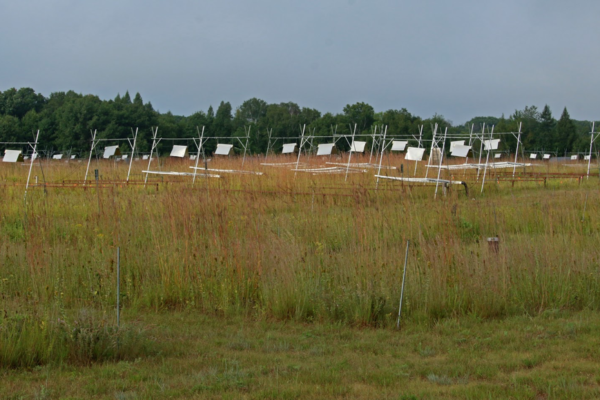 E Zambello/LTER-NCO CC BY 4.0" data-envira-gallery-id="site_images_1902" data-envira-index="24" data-envira-item-id="81139" data-envira-src="https://lternet.edu/wp-content/uploads/2019/02/CDR11-600x400.png" data-envira-srcset="https://lternet.edu/wp-content/uploads/2019/02/CDR11-600x400.png 400w, https://lternet.edu/wp-content/uploads/2019/02/CDR11-600x400.png 2x" data-title="CDR11" itemprop="thumbnailUrl" data-no-lazy="1" data-envirabox="site_images_1902" data-automatic-caption="CDR11 - Plots within Big Bio. E Zambello/LTER-NCO CC BY 4.0" data-envira-height="178" data-envira-width="300" />
E Zambello/LTER-NCO CC BY 4.0" data-envira-gallery-id="site_images_1902" data-envira-index="24" data-envira-item-id="81139" data-envira-src="https://lternet.edu/wp-content/uploads/2019/02/CDR11-600x400.png" data-envira-srcset="https://lternet.edu/wp-content/uploads/2019/02/CDR11-600x400.png 400w, https://lternet.edu/wp-content/uploads/2019/02/CDR11-600x400.png 2x" data-title="CDR11" itemprop="thumbnailUrl" data-no-lazy="1" data-envirabox="site_images_1902" data-automatic-caption="CDR11 - Plots within Big Bio. E Zambello/LTER-NCO CC BY 4.0" data-envira-height="178" data-envira-width="300" />E Zambello/LTER-NCO CC BY 4.0" data-envira-item-id="81138" data-envira-retina="https://lternet.edu/wp-content/uploads/2019/02/CDR12.png" data-thumb="https://lternet.edu/wp-content/uploads/2019/02/CDR12-75x50_c.png" data-title="CDR12" data-envirabox='site_images_1902' itemprop="contentUrl"> E Zambello/LTER-NCO CC BY 4.0" data-envira-gallery-id="site_images_1902" data-envira-index="25" data-envira-item-id="81138" data-envira-src="https://lternet.edu/wp-content/uploads/2019/02/CDR12-600x400.png" data-envira-srcset="https://lternet.edu/wp-content/uploads/2019/02/CDR12-600x400.png 400w, https://lternet.edu/wp-content/uploads/2019/02/CDR12-600x400.png 2x" data-title="CDR12" itemprop="thumbnailUrl" data-no-lazy="1" data-envirabox="site_images_1902" data-automatic-caption="CDR12 - Drought plots on Big Bio. E Zambello/LTER-NCO CC BY 4.0" data-envira-height="200" data-envira-width="300" />
E Zambello/LTER-NCO CC BY 4.0" data-envira-gallery-id="site_images_1902" data-envira-index="25" data-envira-item-id="81138" data-envira-src="https://lternet.edu/wp-content/uploads/2019/02/CDR12-600x400.png" data-envira-srcset="https://lternet.edu/wp-content/uploads/2019/02/CDR12-600x400.png 400w, https://lternet.edu/wp-content/uploads/2019/02/CDR12-600x400.png 2x" data-title="CDR12" itemprop="thumbnailUrl" data-no-lazy="1" data-envirabox="site_images_1902" data-automatic-caption="CDR12 - Drought plots on Big Bio. E Zambello/LTER-NCO CC BY 4.0" data-envira-height="200" data-envira-width="300" />
 E Zambello/LTER-NCO CC BY 4.0" data-envira-gallery-id="site_images_1902" data-envira-index="25" data-envira-item-id="81138" data-envira-src="https://lternet.edu/wp-content/uploads/2019/02/CDR12-600x400.png" data-envira-srcset="https://lternet.edu/wp-content/uploads/2019/02/CDR12-600x400.png 400w, https://lternet.edu/wp-content/uploads/2019/02/CDR12-600x400.png 2x" data-title="CDR12" itemprop="thumbnailUrl" data-no-lazy="1" data-envirabox="site_images_1902" data-automatic-caption="CDR12 - Drought plots on Big Bio. E Zambello/LTER-NCO CC BY 4.0" data-envira-height="200" data-envira-width="300" />
E Zambello/LTER-NCO CC BY 4.0" data-envira-gallery-id="site_images_1902" data-envira-index="25" data-envira-item-id="81138" data-envira-src="https://lternet.edu/wp-content/uploads/2019/02/CDR12-600x400.png" data-envira-srcset="https://lternet.edu/wp-content/uploads/2019/02/CDR12-600x400.png 400w, https://lternet.edu/wp-content/uploads/2019/02/CDR12-600x400.png 2x" data-title="CDR12" itemprop="thumbnailUrl" data-no-lazy="1" data-envirabox="site_images_1902" data-automatic-caption="CDR12 - Drought plots on Big Bio. E Zambello/LTER-NCO CC BY 4.0" data-envira-height="200" data-envira-width="300" />E Zambello/LTER-NCO CC BY 4.0" data-envira-item-id="81136" data-envira-retina="https://lternet.edu/wp-content/uploads/2019/02/CDR8.png" data-thumb="https://lternet.edu/wp-content/uploads/2019/02/CDR8-75x50_c.png" data-title="CDR8" data-envirabox='site_images_1902' itemprop="contentUrl"> E Zambello/LTER-NCO CC BY 4.0" data-envira-gallery-id="site_images_1902" data-envira-index="26" data-envira-item-id="81136" data-envira-src="https://lternet.edu/wp-content/uploads/2019/02/CDR8-600x400.png" data-envira-srcset="https://lternet.edu/wp-content/uploads/2019/02/CDR8-600x400.png 400w, https://lternet.edu/wp-content/uploads/2019/02/CDR8-600x400.png 2x" data-title="CDR8" itemprop="thumbnailUrl" data-no-lazy="1" data-envirabox="site_images_1902" data-automatic-caption="CDR8 - CDR savanna. E Zambello/LTER-NCO CC BY 4.0" data-envira-height="200" data-envira-width="300" />
E Zambello/LTER-NCO CC BY 4.0" data-envira-gallery-id="site_images_1902" data-envira-index="26" data-envira-item-id="81136" data-envira-src="https://lternet.edu/wp-content/uploads/2019/02/CDR8-600x400.png" data-envira-srcset="https://lternet.edu/wp-content/uploads/2019/02/CDR8-600x400.png 400w, https://lternet.edu/wp-content/uploads/2019/02/CDR8-600x400.png 2x" data-title="CDR8" itemprop="thumbnailUrl" data-no-lazy="1" data-envirabox="site_images_1902" data-automatic-caption="CDR8 - CDR savanna. E Zambello/LTER-NCO CC BY 4.0" data-envira-height="200" data-envira-width="300" />
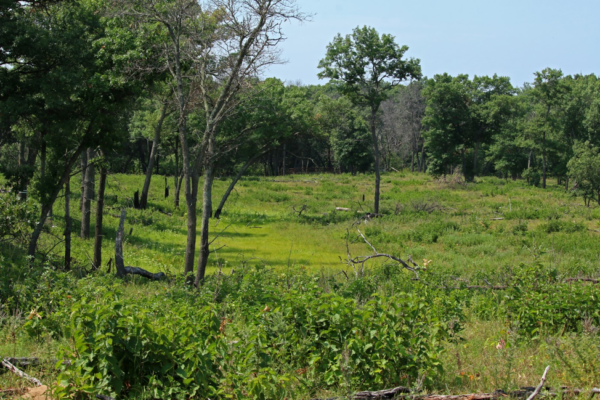 E Zambello/LTER-NCO CC BY 4.0" data-envira-gallery-id="site_images_1902" data-envira-index="26" data-envira-item-id="81136" data-envira-src="https://lternet.edu/wp-content/uploads/2019/02/CDR8-600x400.png" data-envira-srcset="https://lternet.edu/wp-content/uploads/2019/02/CDR8-600x400.png 400w, https://lternet.edu/wp-content/uploads/2019/02/CDR8-600x400.png 2x" data-title="CDR8" itemprop="thumbnailUrl" data-no-lazy="1" data-envirabox="site_images_1902" data-automatic-caption="CDR8 - CDR savanna. E Zambello/LTER-NCO CC BY 4.0" data-envira-height="200" data-envira-width="300" />
E Zambello/LTER-NCO CC BY 4.0" data-envira-gallery-id="site_images_1902" data-envira-index="26" data-envira-item-id="81136" data-envira-src="https://lternet.edu/wp-content/uploads/2019/02/CDR8-600x400.png" data-envira-srcset="https://lternet.edu/wp-content/uploads/2019/02/CDR8-600x400.png 400w, https://lternet.edu/wp-content/uploads/2019/02/CDR8-600x400.png 2x" data-title="CDR8" itemprop="thumbnailUrl" data-no-lazy="1" data-envirabox="site_images_1902" data-automatic-caption="CDR8 - CDR savanna. E Zambello/LTER-NCO CC BY 4.0" data-envira-height="200" data-envira-width="300" />E Zambello/LTER-NCO CC BY 4.0" data-envira-item-id="81135" data-envira-retina="https://lternet.edu/wp-content/uploads/2019/02/CDR7.png" data-thumb="https://lternet.edu/wp-content/uploads/2019/02/CDR7-75x50_c.png" data-title="CDR7" data-envirabox='site_images_1902' itemprop="contentUrl"> E Zambello/LTER-NCO CC BY 4.0" data-envira-gallery-id="site_images_1902" data-envira-index="27" data-envira-item-id="81135" data-envira-src="https://lternet.edu/wp-content/uploads/2019/02/CDR7-600x400.png" data-envira-srcset="https://lternet.edu/wp-content/uploads/2019/02/CDR7-600x400.png 400w, https://lternet.edu/wp-content/uploads/2019/02/CDR7-600x400.png 2x" data-title="CDR7" itemprop="thumbnailUrl" data-no-lazy="1" data-envirabox="site_images_1902" data-automatic-caption="CDR7 - Herd foraging at CDR LTER. E Zambello/LTER-NCO CC BY 4.0" data-envira-height="200" data-envira-width="300" />
E Zambello/LTER-NCO CC BY 4.0" data-envira-gallery-id="site_images_1902" data-envira-index="27" data-envira-item-id="81135" data-envira-src="https://lternet.edu/wp-content/uploads/2019/02/CDR7-600x400.png" data-envira-srcset="https://lternet.edu/wp-content/uploads/2019/02/CDR7-600x400.png 400w, https://lternet.edu/wp-content/uploads/2019/02/CDR7-600x400.png 2x" data-title="CDR7" itemprop="thumbnailUrl" data-no-lazy="1" data-envirabox="site_images_1902" data-automatic-caption="CDR7 - Herd foraging at CDR LTER. E Zambello/LTER-NCO CC BY 4.0" data-envira-height="200" data-envira-width="300" />
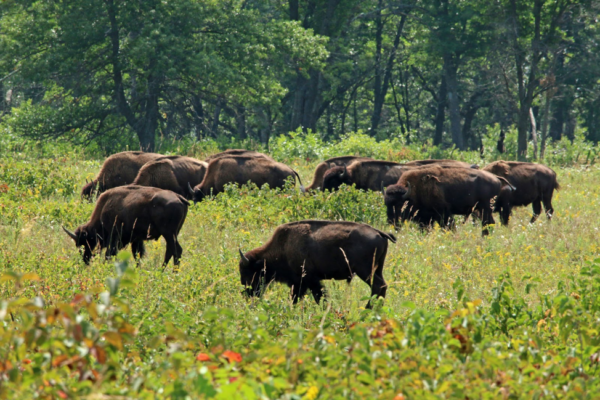 E Zambello/LTER-NCO CC BY 4.0" data-envira-gallery-id="site_images_1902" data-envira-index="27" data-envira-item-id="81135" data-envira-src="https://lternet.edu/wp-content/uploads/2019/02/CDR7-600x400.png" data-envira-srcset="https://lternet.edu/wp-content/uploads/2019/02/CDR7-600x400.png 400w, https://lternet.edu/wp-content/uploads/2019/02/CDR7-600x400.png 2x" data-title="CDR7" itemprop="thumbnailUrl" data-no-lazy="1" data-envirabox="site_images_1902" data-automatic-caption="CDR7 - Herd foraging at CDR LTER. E Zambello/LTER-NCO CC BY 4.0" data-envira-height="200" data-envira-width="300" />
E Zambello/LTER-NCO CC BY 4.0" data-envira-gallery-id="site_images_1902" data-envira-index="27" data-envira-item-id="81135" data-envira-src="https://lternet.edu/wp-content/uploads/2019/02/CDR7-600x400.png" data-envira-srcset="https://lternet.edu/wp-content/uploads/2019/02/CDR7-600x400.png 400w, https://lternet.edu/wp-content/uploads/2019/02/CDR7-600x400.png 2x" data-title="CDR7" itemprop="thumbnailUrl" data-no-lazy="1" data-envirabox="site_images_1902" data-automatic-caption="CDR7 - Herd foraging at CDR LTER. E Zambello/LTER-NCO CC BY 4.0" data-envira-height="200" data-envira-width="300" />E Zambello/LTER-NCO CC BY 4.0" data-envira-item-id="81134" data-envira-retina="https://lternet.edu/wp-content/uploads/2019/02/CDR6.png" data-thumb="https://lternet.edu/wp-content/uploads/2019/02/CDR6-75x50_c.png" data-title="CDR6" data-envirabox='site_images_1902' itemprop="contentUrl"> E Zambello/LTER-NCO CC BY 4.0" data-envira-gallery-id="site_images_1902" data-envira-index="28" data-envira-item-id="81134" data-envira-src="https://lternet.edu/wp-content/uploads/2019/02/CDR6-600x400.png" data-envira-srcset="https://lternet.edu/wp-content/uploads/2019/02/CDR6-600x400.png 400w, https://lternet.edu/wp-content/uploads/2019/02/CDR6-600x400.png 2x" data-title="CDR6" itemprop="thumbnailUrl" data-no-lazy="1" data-envirabox="site_images_1902" data-automatic-caption="CDR6 - Bison and a bison exclosure in the background. E Zambello/LTER-NCO CC BY 4.0" data-envira-height="200" data-envira-width="300" />
E Zambello/LTER-NCO CC BY 4.0" data-envira-gallery-id="site_images_1902" data-envira-index="28" data-envira-item-id="81134" data-envira-src="https://lternet.edu/wp-content/uploads/2019/02/CDR6-600x400.png" data-envira-srcset="https://lternet.edu/wp-content/uploads/2019/02/CDR6-600x400.png 400w, https://lternet.edu/wp-content/uploads/2019/02/CDR6-600x400.png 2x" data-title="CDR6" itemprop="thumbnailUrl" data-no-lazy="1" data-envirabox="site_images_1902" data-automatic-caption="CDR6 - Bison and a bison exclosure in the background. E Zambello/LTER-NCO CC BY 4.0" data-envira-height="200" data-envira-width="300" />
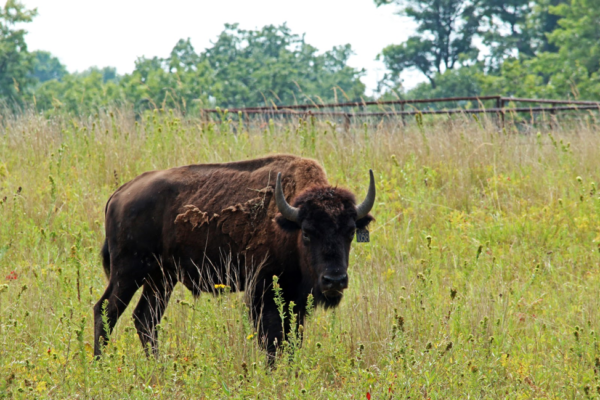 E Zambello/LTER-NCO CC BY 4.0" data-envira-gallery-id="site_images_1902" data-envira-index="28" data-envira-item-id="81134" data-envira-src="https://lternet.edu/wp-content/uploads/2019/02/CDR6-600x400.png" data-envira-srcset="https://lternet.edu/wp-content/uploads/2019/02/CDR6-600x400.png 400w, https://lternet.edu/wp-content/uploads/2019/02/CDR6-600x400.png 2x" data-title="CDR6" itemprop="thumbnailUrl" data-no-lazy="1" data-envirabox="site_images_1902" data-automatic-caption="CDR6 - Bison and a bison exclosure in the background. E Zambello/LTER-NCO CC BY 4.0" data-envira-height="200" data-envira-width="300" />
E Zambello/LTER-NCO CC BY 4.0" data-envira-gallery-id="site_images_1902" data-envira-index="28" data-envira-item-id="81134" data-envira-src="https://lternet.edu/wp-content/uploads/2019/02/CDR6-600x400.png" data-envira-srcset="https://lternet.edu/wp-content/uploads/2019/02/CDR6-600x400.png 400w, https://lternet.edu/wp-content/uploads/2019/02/CDR6-600x400.png 2x" data-title="CDR6" itemprop="thumbnailUrl" data-no-lazy="1" data-envirabox="site_images_1902" data-automatic-caption="CDR6 - Bison and a bison exclosure in the background. E Zambello/LTER-NCO CC BY 4.0" data-envira-height="200" data-envira-width="300" />E Zambello/LTER-NCO CC BY 4.0" data-envira-item-id="81133" data-envira-retina="https://lternet.edu/wp-content/uploads/2019/02/CDR5-e1585003189324.png" data-thumb="https://lternet.edu/wp-content/uploads/2019/02/CDR5-e1585003189324-75x50_c.png" data-title="CDR5" data-envirabox='site_images_1902' itemprop="contentUrl"> E Zambello/LTER-NCO CC BY 4.0" data-envira-gallery-id="site_images_1902" data-envira-index="29" data-envira-item-id="81133" data-envira-src="https://lternet.edu/wp-content/uploads/2019/02/CDR5-e1585003189324-478x400.png" data-envira-srcset="https://lternet.edu/wp-content/uploads/2019/02/CDR5-e1585003189324-478x400.png 400w, https://lternet.edu/wp-content/uploads/2019/02/CDR5-e1585003189324-478x400.png 2x" data-title="CDR5" itemprop="thumbnailUrl" data-no-lazy="1" data-envirabox="site_images_1902" data-automatic-caption="CDR5 - Lounging bison at Cedar Creek Ecosystem Science Reserve. E Zambello/LTER-NCO CC BY 4.0" data-envira-height="251" data-envira-width="300" />
E Zambello/LTER-NCO CC BY 4.0" data-envira-gallery-id="site_images_1902" data-envira-index="29" data-envira-item-id="81133" data-envira-src="https://lternet.edu/wp-content/uploads/2019/02/CDR5-e1585003189324-478x400.png" data-envira-srcset="https://lternet.edu/wp-content/uploads/2019/02/CDR5-e1585003189324-478x400.png 400w, https://lternet.edu/wp-content/uploads/2019/02/CDR5-e1585003189324-478x400.png 2x" data-title="CDR5" itemprop="thumbnailUrl" data-no-lazy="1" data-envirabox="site_images_1902" data-automatic-caption="CDR5 - Lounging bison at Cedar Creek Ecosystem Science Reserve. E Zambello/LTER-NCO CC BY 4.0" data-envira-height="251" data-envira-width="300" />
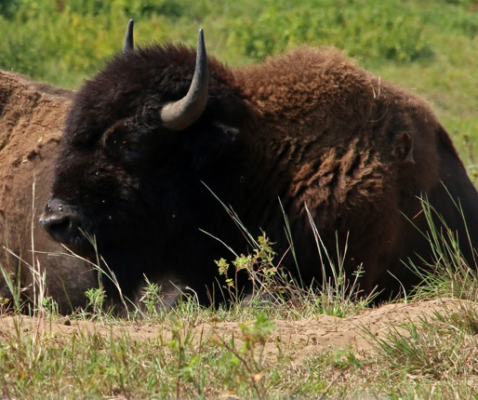 E Zambello/LTER-NCO CC BY 4.0" data-envira-gallery-id="site_images_1902" data-envira-index="29" data-envira-item-id="81133" data-envira-src="https://lternet.edu/wp-content/uploads/2019/02/CDR5-e1585003189324-478x400.png" data-envira-srcset="https://lternet.edu/wp-content/uploads/2019/02/CDR5-e1585003189324-478x400.png 400w, https://lternet.edu/wp-content/uploads/2019/02/CDR5-e1585003189324-478x400.png 2x" data-title="CDR5" itemprop="thumbnailUrl" data-no-lazy="1" data-envirabox="site_images_1902" data-automatic-caption="CDR5 - Lounging bison at Cedar Creek Ecosystem Science Reserve. E Zambello/LTER-NCO CC BY 4.0" data-envira-height="251" data-envira-width="300" />
E Zambello/LTER-NCO CC BY 4.0" data-envira-gallery-id="site_images_1902" data-envira-index="29" data-envira-item-id="81133" data-envira-src="https://lternet.edu/wp-content/uploads/2019/02/CDR5-e1585003189324-478x400.png" data-envira-srcset="https://lternet.edu/wp-content/uploads/2019/02/CDR5-e1585003189324-478x400.png 400w, https://lternet.edu/wp-content/uploads/2019/02/CDR5-e1585003189324-478x400.png 2x" data-title="CDR5" itemprop="thumbnailUrl" data-no-lazy="1" data-envirabox="site_images_1902" data-automatic-caption="CDR5 - Lounging bison at Cedar Creek Ecosystem Science Reserve. E Zambello/LTER-NCO CC BY 4.0" data-envira-height="251" data-envira-width="300" />E Zambello/LTER-NCO CC BY 4.0" data-envira-item-id="81131" data-envira-retina="https://lternet.edu/wp-content/uploads/2019/02/CDR4.png" data-thumb="https://lternet.edu/wp-content/uploads/2019/02/CDR4-75x50_c.png" data-title="CDR4" data-envirabox='site_images_1902' itemprop="contentUrl"> E Zambello/LTER-NCO CC BY 4.0" data-envira-gallery-id="site_images_1902" data-envira-index="30" data-envira-item-id="81131" data-envira-src="https://lternet.edu/wp-content/uploads/2019/02/CDR4-600x400.png" data-envira-srcset="https://lternet.edu/wp-content/uploads/2019/02/CDR4-600x400.png 400w, https://lternet.edu/wp-content/uploads/2019/02/CDR4-600x400.png 2x" data-title="CDR4" itemprop="thumbnailUrl" data-no-lazy="1" data-envirabox="site_images_1902" data-automatic-caption="CDR4 - Looking for beetle tracks. E Zambello/LTER-NCO CC BY 4.0" data-envira-height="198" data-envira-width="300" />
E Zambello/LTER-NCO CC BY 4.0" data-envira-gallery-id="site_images_1902" data-envira-index="30" data-envira-item-id="81131" data-envira-src="https://lternet.edu/wp-content/uploads/2019/02/CDR4-600x400.png" data-envira-srcset="https://lternet.edu/wp-content/uploads/2019/02/CDR4-600x400.png 400w, https://lternet.edu/wp-content/uploads/2019/02/CDR4-600x400.png 2x" data-title="CDR4" itemprop="thumbnailUrl" data-no-lazy="1" data-envirabox="site_images_1902" data-automatic-caption="CDR4 - Looking for beetle tracks. E Zambello/LTER-NCO CC BY 4.0" data-envira-height="198" data-envira-width="300" />
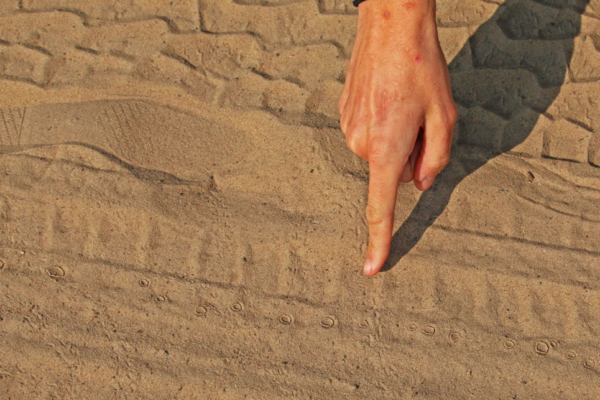 E Zambello/LTER-NCO CC BY 4.0" data-envira-gallery-id="site_images_1902" data-envira-index="30" data-envira-item-id="81131" data-envira-src="https://lternet.edu/wp-content/uploads/2019/02/CDR4-600x400.png" data-envira-srcset="https://lternet.edu/wp-content/uploads/2019/02/CDR4-600x400.png 400w, https://lternet.edu/wp-content/uploads/2019/02/CDR4-600x400.png 2x" data-title="CDR4" itemprop="thumbnailUrl" data-no-lazy="1" data-envirabox="site_images_1902" data-automatic-caption="CDR4 - Looking for beetle tracks. E Zambello/LTER-NCO CC BY 4.0" data-envira-height="198" data-envira-width="300" />
E Zambello/LTER-NCO CC BY 4.0" data-envira-gallery-id="site_images_1902" data-envira-index="30" data-envira-item-id="81131" data-envira-src="https://lternet.edu/wp-content/uploads/2019/02/CDR4-600x400.png" data-envira-srcset="https://lternet.edu/wp-content/uploads/2019/02/CDR4-600x400.png 400w, https://lternet.edu/wp-content/uploads/2019/02/CDR4-600x400.png 2x" data-title="CDR4" itemprop="thumbnailUrl" data-no-lazy="1" data-envirabox="site_images_1902" data-automatic-caption="CDR4 - Looking for beetle tracks. E Zambello/LTER-NCO CC BY 4.0" data-envira-height="198" data-envira-width="300" />E Zambello/LTER-NCO CC BY 4.0" data-envira-item-id="81130" data-envira-retina="https://lternet.edu/wp-content/uploads/2019/02/CDR3.png" data-thumb="https://lternet.edu/wp-content/uploads/2019/02/CDR3-75x50_c.png" data-title="CDR3" data-envirabox='site_images_1902' itemprop="contentUrl"> E Zambello/LTER-NCO CC BY 4.0" data-envira-gallery-id="site_images_1902" data-envira-index="31" data-envira-item-id="81130" data-envira-src="https://lternet.edu/wp-content/uploads/2019/02/CDR3-600x400.png" data-envira-srcset="https://lternet.edu/wp-content/uploads/2019/02/CDR3-600x400.png 400w, https://lternet.edu/wp-content/uploads/2019/02/CDR3-600x400.png 2x" data-title="CDR3" itemprop="thumbnailUrl" data-no-lazy="1" data-envirabox="site_images_1902" data-automatic-caption="CDR3 - Mystery solved! It's a wasp." data-envira-height="200" data-envira-width="300" />
E Zambello/LTER-NCO CC BY 4.0" data-envira-gallery-id="site_images_1902" data-envira-index="31" data-envira-item-id="81130" data-envira-src="https://lternet.edu/wp-content/uploads/2019/02/CDR3-600x400.png" data-envira-srcset="https://lternet.edu/wp-content/uploads/2019/02/CDR3-600x400.png 400w, https://lternet.edu/wp-content/uploads/2019/02/CDR3-600x400.png 2x" data-title="CDR3" itemprop="thumbnailUrl" data-no-lazy="1" data-envirabox="site_images_1902" data-automatic-caption="CDR3 - Mystery solved! It's a wasp." data-envira-height="200" data-envira-width="300" />
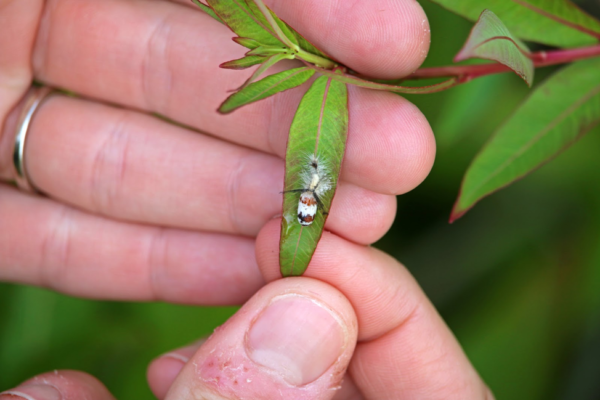 E Zambello/LTER-NCO CC BY 4.0" data-envira-gallery-id="site_images_1902" data-envira-index="31" data-envira-item-id="81130" data-envira-src="https://lternet.edu/wp-content/uploads/2019/02/CDR3-600x400.png" data-envira-srcset="https://lternet.edu/wp-content/uploads/2019/02/CDR3-600x400.png 400w, https://lternet.edu/wp-content/uploads/2019/02/CDR3-600x400.png 2x" data-title="CDR3" itemprop="thumbnailUrl" data-no-lazy="1" data-envirabox="site_images_1902" data-automatic-caption="CDR3 - Mystery solved! It's a wasp." data-envira-height="200" data-envira-width="300" />
E Zambello/LTER-NCO CC BY 4.0" data-envira-gallery-id="site_images_1902" data-envira-index="31" data-envira-item-id="81130" data-envira-src="https://lternet.edu/wp-content/uploads/2019/02/CDR3-600x400.png" data-envira-srcset="https://lternet.edu/wp-content/uploads/2019/02/CDR3-600x400.png 400w, https://lternet.edu/wp-content/uploads/2019/02/CDR3-600x400.png 2x" data-title="CDR3" itemprop="thumbnailUrl" data-no-lazy="1" data-envirabox="site_images_1902" data-automatic-caption="CDR3 - Mystery solved! It's a wasp." data-envira-height="200" data-envira-width="300" />E Zambello/LTER-NCO CC BY 4.0" data-envira-item-id="81129" data-envira-retina="https://lternet.edu/wp-content/uploads/2019/02/CDR2.png" data-thumb="https://lternet.edu/wp-content/uploads/2019/02/CDR2-75x50_c.png" data-title="CDR2" data-envirabox='site_images_1902' itemprop="contentUrl"> E Zambello/LTER-NCO CC BY 4.0" data-envira-gallery-id="site_images_1902" data-envira-index="32" data-envira-item-id="81129" data-envira-src="https://lternet.edu/wp-content/uploads/2019/02/CDR2-600x400.png" data-envira-srcset="https://lternet.edu/wp-content/uploads/2019/02/CDR2-600x400.png 400w, https://lternet.edu/wp-content/uploads/2019/02/CDR2-600x400.png 2x" data-title="CDR2" itemprop="thumbnailUrl" data-no-lazy="1" data-envirabox="site_images_1902" data-automatic-caption="CDR2 - Cedar Bog Lake. E Zambello/LTER-NCO CC BY 4.0" data-envira-height="200" data-envira-width="300" />
E Zambello/LTER-NCO CC BY 4.0" data-envira-gallery-id="site_images_1902" data-envira-index="32" data-envira-item-id="81129" data-envira-src="https://lternet.edu/wp-content/uploads/2019/02/CDR2-600x400.png" data-envira-srcset="https://lternet.edu/wp-content/uploads/2019/02/CDR2-600x400.png 400w, https://lternet.edu/wp-content/uploads/2019/02/CDR2-600x400.png 2x" data-title="CDR2" itemprop="thumbnailUrl" data-no-lazy="1" data-envirabox="site_images_1902" data-automatic-caption="CDR2 - Cedar Bog Lake. E Zambello/LTER-NCO CC BY 4.0" data-envira-height="200" data-envira-width="300" />
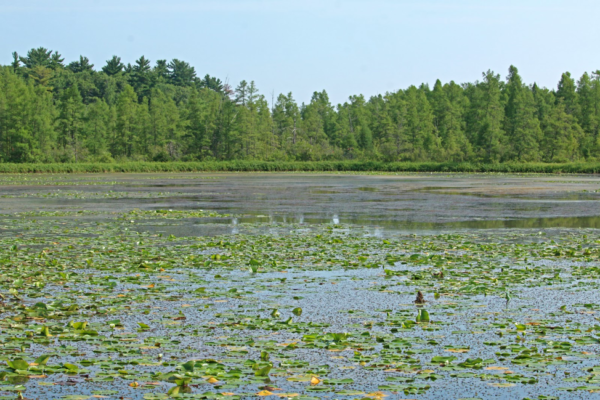 E Zambello/LTER-NCO CC BY 4.0" data-envira-gallery-id="site_images_1902" data-envira-index="32" data-envira-item-id="81129" data-envira-src="https://lternet.edu/wp-content/uploads/2019/02/CDR2-600x400.png" data-envira-srcset="https://lternet.edu/wp-content/uploads/2019/02/CDR2-600x400.png 400w, https://lternet.edu/wp-content/uploads/2019/02/CDR2-600x400.png 2x" data-title="CDR2" itemprop="thumbnailUrl" data-no-lazy="1" data-envirabox="site_images_1902" data-automatic-caption="CDR2 - Cedar Bog Lake. E Zambello/LTER-NCO CC BY 4.0" data-envira-height="200" data-envira-width="300" />
E Zambello/LTER-NCO CC BY 4.0" data-envira-gallery-id="site_images_1902" data-envira-index="32" data-envira-item-id="81129" data-envira-src="https://lternet.edu/wp-content/uploads/2019/02/CDR2-600x400.png" data-envira-srcset="https://lternet.edu/wp-content/uploads/2019/02/CDR2-600x400.png 400w, https://lternet.edu/wp-content/uploads/2019/02/CDR2-600x400.png 2x" data-title="CDR2" itemprop="thumbnailUrl" data-no-lazy="1" data-envirabox="site_images_1902" data-automatic-caption="CDR2 - Cedar Bog Lake. E Zambello/LTER-NCO CC BY 4.0" data-envira-height="200" data-envira-width="300" />E Zambello/LTER-NCO CC BY 4.0" data-envira-item-id="81128" data-envira-retina="https://lternet.edu/wp-content/uploads/2019/02/CDR1.png" data-thumb="https://lternet.edu/wp-content/uploads/2019/02/CDR1-75x50_c.png" data-title="CDR1" data-envirabox='site_images_1902' itemprop="contentUrl"> E Zambello/LTER-NCO CC BY 4.0" data-envira-gallery-id="site_images_1902" data-envira-index="33" data-envira-item-id="81128" data-envira-src="https://lternet.edu/wp-content/uploads/2019/02/CDR1-600x400.png" data-envira-srcset="https://lternet.edu/wp-content/uploads/2019/02/CDR1-600x400.png 400w, https://lternet.edu/wp-content/uploads/2019/02/CDR1-600x400.png 2x" data-title="CDR1" itemprop="thumbnailUrl" data-no-lazy="1" data-envirabox="site_images_1902" data-automatic-caption="CDR1 - Raised boardwalk on CDR’s nature trail. E Zambello/LTER-NCO CC BY 4.0" data-envira-height="200" data-envira-width="300" />
E Zambello/LTER-NCO CC BY 4.0" data-envira-gallery-id="site_images_1902" data-envira-index="33" data-envira-item-id="81128" data-envira-src="https://lternet.edu/wp-content/uploads/2019/02/CDR1-600x400.png" data-envira-srcset="https://lternet.edu/wp-content/uploads/2019/02/CDR1-600x400.png 400w, https://lternet.edu/wp-content/uploads/2019/02/CDR1-600x400.png 2x" data-title="CDR1" itemprop="thumbnailUrl" data-no-lazy="1" data-envirabox="site_images_1902" data-automatic-caption="CDR1 - Raised boardwalk on CDR’s nature trail. E Zambello/LTER-NCO CC BY 4.0" data-envira-height="200" data-envira-width="300" />
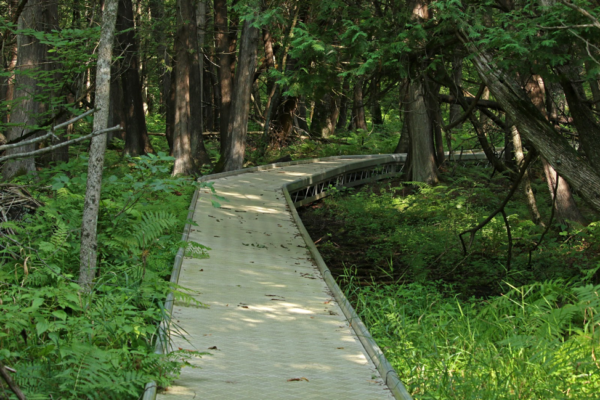 E Zambello/LTER-NCO CC BY 4.0" data-envira-gallery-id="site_images_1902" data-envira-index="33" data-envira-item-id="81128" data-envira-src="https://lternet.edu/wp-content/uploads/2019/02/CDR1-600x400.png" data-envira-srcset="https://lternet.edu/wp-content/uploads/2019/02/CDR1-600x400.png 400w, https://lternet.edu/wp-content/uploads/2019/02/CDR1-600x400.png 2x" data-title="CDR1" itemprop="thumbnailUrl" data-no-lazy="1" data-envirabox="site_images_1902" data-automatic-caption="CDR1 - Raised boardwalk on CDR’s nature trail. E Zambello/LTER-NCO CC BY 4.0" data-envira-height="200" data-envira-width="300" />
E Zambello/LTER-NCO CC BY 4.0" data-envira-gallery-id="site_images_1902" data-envira-index="33" data-envira-item-id="81128" data-envira-src="https://lternet.edu/wp-content/uploads/2019/02/CDR1-600x400.png" data-envira-srcset="https://lternet.edu/wp-content/uploads/2019/02/CDR1-600x400.png 400w, https://lternet.edu/wp-content/uploads/2019/02/CDR1-600x400.png 2x" data-title="CDR1" itemprop="thumbnailUrl" data-no-lazy="1" data-envirabox="site_images_1902" data-automatic-caption="CDR1 - Raised boardwalk on CDR’s nature trail. E Zambello/LTER-NCO CC BY 4.0" data-envira-height="200" data-envira-width="300" />

